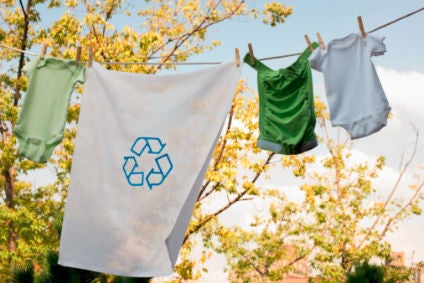
Online textile upcycle marketplace Reverse Resources has called for the re-manufacturing of textile waste, which it says could help mills economically, as well as in closing their own production loop, and improving data exchange, supply chain transparency and traceability.
The H&M Foundation Global Change Award winner carried out extensive research among major fabric and garment factories in China and Bangladesh, concluding that the volume of production leftovers is systematically under-reported and thus underestimated by the industry.

Discover B2B Marketing That Performs
Combine business intelligence and editorial excellence to reach engaged professionals across 36 leading media platforms.
Quoting figures from the Massachusetts Institute of Technology, in Bangladesh, 10.2bn garments were produced in 2014, which represents around 5-7% of global garment production. At the same time, the volume of by-products was reported as over 351,000 tonnes out of total yarn consumption (production + import) of garment production being 1.394m tonnes. This means the by-products represent 25% of the total consumption.
However, previous studies estimate the quantity of pre-consumer textile waste equals only 10-20% of the textiles used in clothing manufacturing.
“Our experience confirms that the volumes of production leftovers are systematically under-reported and thus underestimated by brands and researchers,” the report states.
Even though the waste materials get used somewhere, Reverse Resources says most materials get downcycled, incinerated or dumped.

US Tariffs are shifting - will you react or anticipate?
Don’t let policy changes catch you off guard. Stay proactive with real-time data and expert analysis.
By GlobalData“We suggest a win-win business model of re-manufacturing – integrating >20% of the leftovers (bigger fabric pieces) back into the same production,” the company says, adding: “Better data from factories would facilitate virtual traceability of resources and digital interconnections throughout supply chains. This is crucial for building an effective circular economy as well as supporting many digital solutions of industry 4.0 globally.”
However, to enable re-manufacturing, Reverse Resources says it is necessary to adapt a pricing scheme, set up proper measurement and data gathering methods to map leftovers, enforce circularity and demand transparency, deal with hidden subsidies and set up a support mechanism for stakeholders to build trust and cooperation.
“We estimate that such an approach could help increase the market value earned from leftovers by the factories by 3-4 times while simultaneously lowering FOB prices for buyers. It would also reduce the use of new fabrics in production by >3% by switching to leftover fabrics. Along with the first tangible data-driven business case, it provides access to information which is crucial to facilitate various other digital solutions about to come along with industry 4.0 and disrupt the industry (e.g virtual traceability of fabrics through supply chains with blockchain technologies).”





